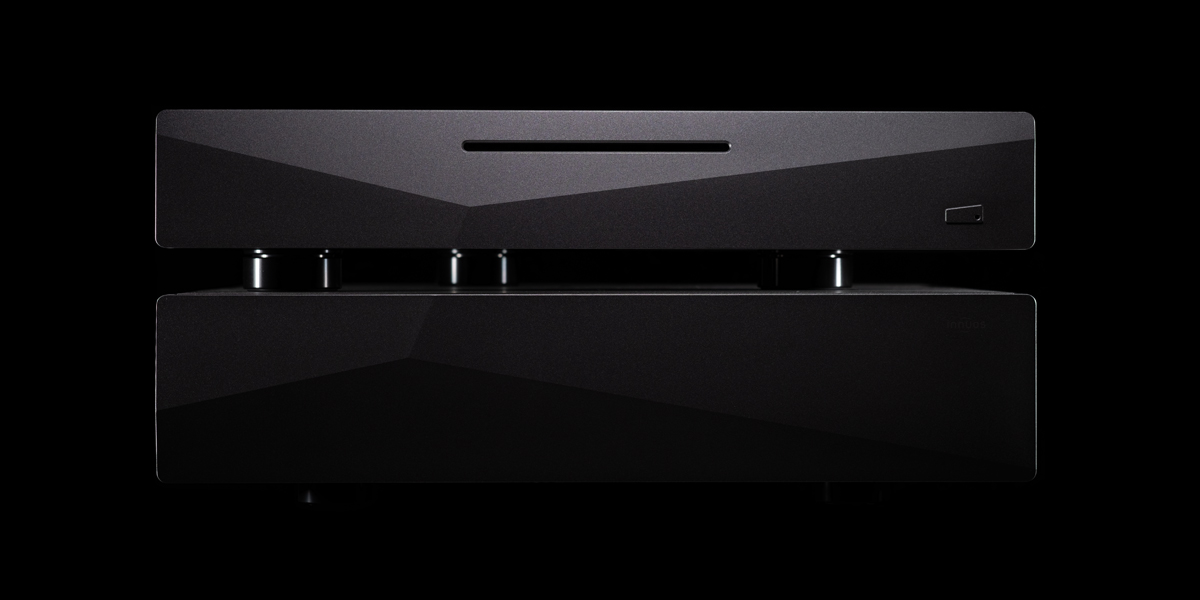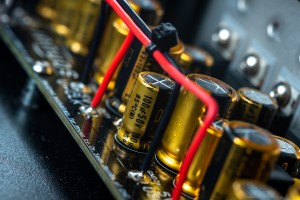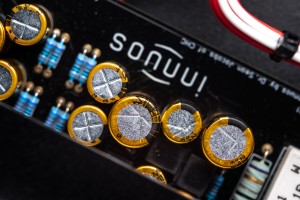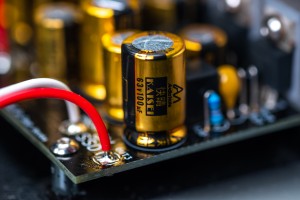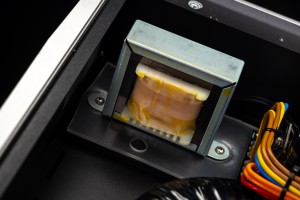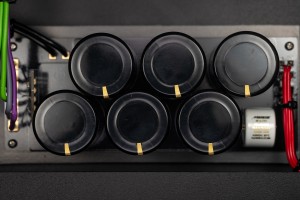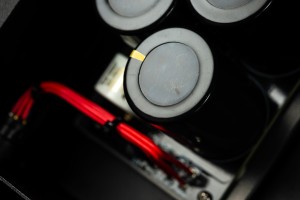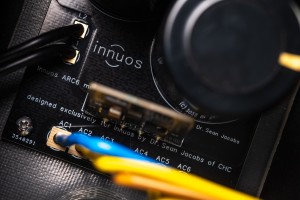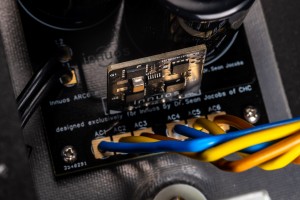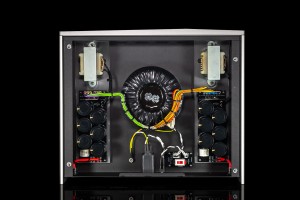Innuos Statement Next-Gen is the Portuguese manufacturer’s latest flagship music streamer built upon the Statement platform. Since I had both these products at my disposal for a while, their comparison was unavoidable. Enjoy!
The evo
Each time when I walk into my listening room, for a brief moment the audio setup in there feels brand new, as if I just got it. I can’t explain this odd sensation. It’s neither good or bad. It just is. The weirdness of it is in the fact that my last major audio upgrade dates more than two years back. That’s why I should feel well accustomed to the electronic kit at my disposal. Luckily everything gets back to normal once I start my routine. Then I hear exactly what I should and all is dandy. This sound is useful for the reviewer gig and enjoyable enough to keep the upgrade bug at bay. To seriously consider such thoughts I’d have to first move to a larger room. Currently this main limiting factor can’t be addressed. Besides, if I were to change any specific component now, I’d have to first have a noticeably superior target on my radar. That said, I already know which analog end and DAC I’d like to enjoy in the future. Boenicke and sound|kaos speakers remain as they are. Until recently the Innuos Statement server/streamer also was in that secure group. Now it’s not. Audio electronics are an extremely diverse product group, while power is their common ground. It matters not whether it’s a DAC, streamer, preamp or twin hulking mono amps. Power supplies largely determine their sound quality, which is why they’re considered as foundational and critical for performance. Interestingly about 70% of my DAC’s interior is taken via its overbuilt PSU and the same story is with the Trilogy 995R/915R set. That’s by design. Good transformers, filtering caps and rectification stages eat up space. Many manufacturers also strive to limit noise incoming from their power supplies into the sensitive electronics inside the same product. Interference between these components, mechanical resonances and pollution from the mains are the well-known offenders responsible for audible harshness and grain. To avoid these issues, some designs have their power supplies and core circuitry spread across two separate enclosures connected via umbilical cords. The Portuguese company Innuos took this costly route in case of their top shelf twin-chassis Statement server/streamer. Ever since its launch this hardware-wise locked affair accepted only software updates. Fast forward to early 2023, when its makers had decided to redesign the entire power supply box of this machine. The effect of this overhaul was significant enough to call for a higher-tiered product named Innuos Statement Next-Gen (€20’000/20’300/20’900/22’100 for 1/2/4/8TB versions respectively). If you own the previous Statement, fret not. Your local Innuos dealer will help you out with upgrading it to the Next-Gen version. €5’000 is the price to pay for this service, while today we’re about to investigate whether it’s worth considering.
Audio electronics are an extremely diverse product group, while power is their common ground. It matters not whether it’s a DAC, streamer, preamp or twin hulking mono amps. Power supplies largely determine their sound quality, which is why they’re considered as foundational and critical for performance. Interestingly about 70% of my DAC’s interior is taken via its overbuilt PSU and the same story is with the Trilogy 995R/915R set. That’s by design. Good transformers, filtering caps and rectification stages eat up space. Many manufacturers also strive to limit noise incoming from their power supplies into the sensitive electronics inside the same product. Interference between these components, mechanical resonances and pollution from the mains are the well-known offenders responsible for audible harshness and grain. To avoid these issues, some designs have their power supplies and core circuitry spread across two separate enclosures connected via umbilical cords. The Portuguese company Innuos took this costly route in case of their top shelf twin-chassis Statement server/streamer. Ever since its launch this hardware-wise locked affair accepted only software updates. Fast forward to early 2023, when its makers had decided to redesign the entire power supply box of this machine. The effect of this overhaul was significant enough to call for a higher-tiered product named Innuos Statement Next-Gen (€20’000/20’300/20’900/22’100 for 1/2/4/8TB versions respectively). If you own the previous Statement, fret not. Your local Innuos dealer will help you out with upgrading it to the Next-Gen version. €5’000 is the price to pay for this service, while today we’re about to investigate whether it’s worth considering.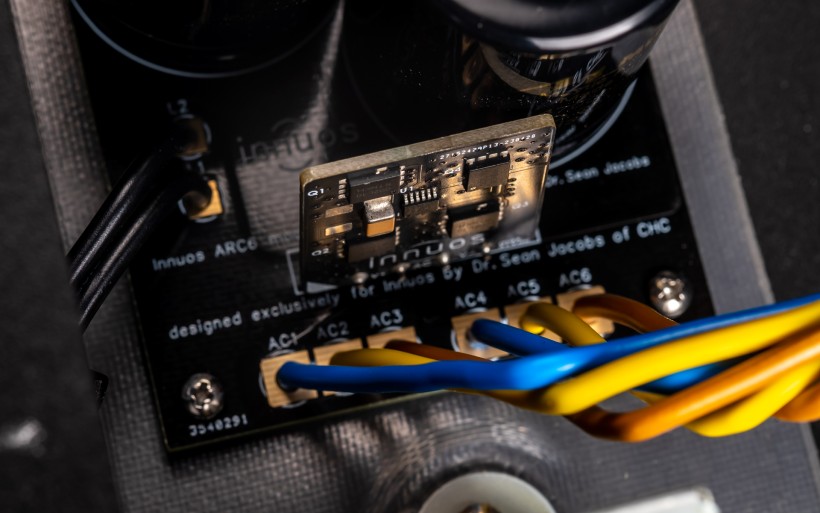 Let’s recap the Innuos Statement basics. This audio server/streamer designed with sound quality as its top priority distributes digital music exclusively via wired LAN and says nay to noisy streaming over WLAN. It is powerful enough to operate as a Roon Core/Bridge device and relies on its own SSD storage, while its in-built optical drive rips silver discs. Thus far this was the only full-sized Innuos design that packed its streaming bits and linear PSU inside their own enclosures. Stacked they measure (W x D x H) 420 x 352 x 190mm and show 21.6kg on the scale. Their sandblasted foreheads visually connect four angled planes and make one fine machine to look at. The upper box being a server/streamer component packs a CD slot and the secondary on/off switch with a multi-colored LED, while the larger lower deck houses the PSU. The former enclosure sits on three asymmetrically aligned POM pucks each with three rubber hemispheres, while the latter’s underside rocks four larger spring-infused footers with rubber O-rings. Matte silver or black are the two available finishes.
Let’s recap the Innuos Statement basics. This audio server/streamer designed with sound quality as its top priority distributes digital music exclusively via wired LAN and says nay to noisy streaming over WLAN. It is powerful enough to operate as a Roon Core/Bridge device and relies on its own SSD storage, while its in-built optical drive rips silver discs. Thus far this was the only full-sized Innuos design that packed its streaming bits and linear PSU inside their own enclosures. Stacked they measure (W x D x H) 420 x 352 x 190mm and show 21.6kg on the scale. Their sandblasted foreheads visually connect four angled planes and make one fine machine to look at. The upper box being a server/streamer component packs a CD slot and the secondary on/off switch with a multi-colored LED, while the larger lower deck houses the PSU. The former enclosure sits on three asymmetrically aligned POM pucks each with three rubber hemispheres, while the latter’s underside rocks four larger spring-infused footers with rubber O-rings. Matte silver or black are the two available finishes.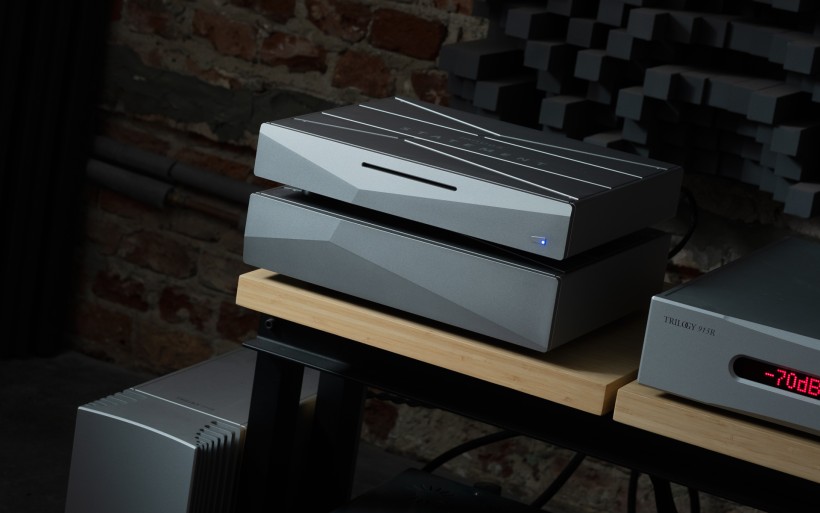 The upper box is a heavily customized PC that runs on homebrewed BIOS, modified Linux OS named InnuOS and LMS used as music library. Internals reveal TEAC optical drive and Intel SSD both on an anti-vibration suspension. Then there’s a Mini-ITX mobo with Intel CPU, 8GB of RAM (4GB reserved for in-memory playback), optimized clocks and removed EMI sources. Ethernet ports feature their own reclockers with 3ppb OCXO clocks. The server’s rear end is busy with two DC locking inlets, in-between which we see a HDMI service input, two USB type A ports (blue 3.0 for backup/external storage, black 2.0 for digital audio out) and as many RJ45s to use the Statement either as an AiO device for a DAC, or as a NAS for a different streamer. The USB2.0 port conditioned via the company’s very effective internal Phoenix module is the one to connect to your DAC. This reclocking circuit trims noise from a connected source’s 5V line, then it injects its own pristine 5V and its OCXO oscillator reclocks the USB bus whilst keeping the audio data intact. This 24MHz clock locates inside a shielded compartment mere 20mm away from the USB I/O chipset to reduce jitter. The Phoenix module relies on its own voltage filtering and regulation blocks which provide one rail for the OCXO and the other for everything else. Since the USB chip doesn’t feature switching regulators, it needs these voltages.
The upper box is a heavily customized PC that runs on homebrewed BIOS, modified Linux OS named InnuOS and LMS used as music library. Internals reveal TEAC optical drive and Intel SSD both on an anti-vibration suspension. Then there’s a Mini-ITX mobo with Intel CPU, 8GB of RAM (4GB reserved for in-memory playback), optimized clocks and removed EMI sources. Ethernet ports feature their own reclockers with 3ppb OCXO clocks. The server’s rear end is busy with two DC locking inlets, in-between which we see a HDMI service input, two USB type A ports (blue 3.0 for backup/external storage, black 2.0 for digital audio out) and as many RJ45s to use the Statement either as an AiO device for a DAC, or as a NAS for a different streamer. The USB2.0 port conditioned via the company’s very effective internal Phoenix module is the one to connect to your DAC. This reclocking circuit trims noise from a connected source’s 5V line, then it injects its own pristine 5V and its OCXO oscillator reclocks the USB bus whilst keeping the audio data intact. This 24MHz clock locates inside a shielded compartment mere 20mm away from the USB I/O chipset to reduce jitter. The Phoenix module relies on its own voltage filtering and regulation blocks which provide one rail for the OCXO and the other for everything else. Since the USB chip doesn’t feature switching regulators, it needs these voltages. The regular Statement’s PSU enclosure has twin DC outlets and a fused IEC socket with the main on/off rocker on the back, so nothing out of ordinary per se. The internal power supply designed by Dr. Sean Jacobs (of Custom HiFi Cables Ltd.) however ticks all the audiophile checkboxes. The IEC inlet connects to a medical-grade mains filter with a voltage selector. A massive custom-made toroidal transformer feeds four double rectifier boards, which provide eight linear DC rails in total; two for the USB circuit, three for the motherboard and one of each for the Ethernet reclocker, CPU and SSD. The server box enjoys two additional regulation boards located near both its aluminium cheeks. All in all, the regular Statement already is fancy on the power front. The Next-Gen PSU is even more. The linear topology based on a large toroid and design by the same skilled individual remained. Rare means were added. Each of the two AC/DC modules named ARC6 packs a new high-precision active rectifier board, a large 10mH DC-input choke and six Mundorf caps, which in total boast 4x more capacitance in comparison to the regular Statement. These modules mount atop the new AVC (Adaptive Vibration Control) platform comprised of the Panzerholz wood base and gel layer of very specific thickness to damp high-frequency oscillations incoming from the chassis. Meanwhile, voltage regulators inside the server/streamer box incorporate a dedicated CPU booster module capable of outputting up to 15 amps of current to the processor. Voltage rails for the motherboard, SSD, USB and Ethernet recloker modules enjoy Audio Note Kaisei caps. The Next-Gen upgrade involves reworks inside both Statement enclosures, which explains why replacing the regular PSU box with its upper-echelon version won’t do. Just so you know, the original Statement and its Next-Gen version are visual twins and they operate the same way. All changes from one model to another are internal, so diving inside their bonnets is mandatory to tell them apart.
The regular Statement’s PSU enclosure has twin DC outlets and a fused IEC socket with the main on/off rocker on the back, so nothing out of ordinary per se. The internal power supply designed by Dr. Sean Jacobs (of Custom HiFi Cables Ltd.) however ticks all the audiophile checkboxes. The IEC inlet connects to a medical-grade mains filter with a voltage selector. A massive custom-made toroidal transformer feeds four double rectifier boards, which provide eight linear DC rails in total; two for the USB circuit, three for the motherboard and one of each for the Ethernet reclocker, CPU and SSD. The server box enjoys two additional regulation boards located near both its aluminium cheeks. All in all, the regular Statement already is fancy on the power front. The Next-Gen PSU is even more. The linear topology based on a large toroid and design by the same skilled individual remained. Rare means were added. Each of the two AC/DC modules named ARC6 packs a new high-precision active rectifier board, a large 10mH DC-input choke and six Mundorf caps, which in total boast 4x more capacitance in comparison to the regular Statement. These modules mount atop the new AVC (Adaptive Vibration Control) platform comprised of the Panzerholz wood base and gel layer of very specific thickness to damp high-frequency oscillations incoming from the chassis. Meanwhile, voltage regulators inside the server/streamer box incorporate a dedicated CPU booster module capable of outputting up to 15 amps of current to the processor. Voltage rails for the motherboard, SSD, USB and Ethernet recloker modules enjoy Audio Note Kaisei caps. The Next-Gen upgrade involves reworks inside both Statement enclosures, which explains why replacing the regular PSU box with its upper-echelon version won’t do. Just so you know, the original Statement and its Next-Gen version are visual twins and they operate the same way. All changes from one model to another are internal, so diving inside their bonnets is mandatory to tell them apart.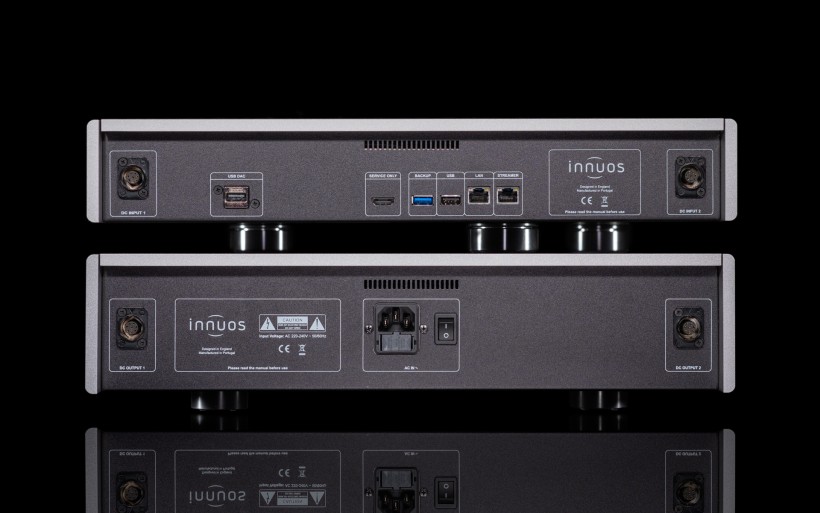 Two subjects need unpacking. Power supply capacitors are charged at peaks and bottoms of the waveform, so they draw current about 1% of the time and in bursts, which creates noise. Input chokes however provide nearly continual (99%) sinusoidal current to these caps, which limits noise and provides more constant energy flux. Chokes used to reduce voltage ripples and input-choke power supplies aren’t the same thing. The founder of Trilogy – Nic Poulson – is the advocate of the latter implementation, which is more difficult to properly execute. Most his products have it and now due to the efforts of Sean Jacobs also the Statement Next-Gen. Just to be clear, choke-input PSUs aren’t new, just not popular. These parts can get very expensive and adequately big, so enclosures with them inside have to grow in size and raise manufacturing costs. That’s why very few manufacturers bother, but now you know that team Innuos does. The other subject is Panzerholz built upon hardwood layers cured in phenolic resin under extreme heat and in vacuum. This material is 20x more expensive than MDF and strong enough to literally stop a bullet. It also has remarkable self-damping properties, but we don’t get to see it often in the audio biz. Some LessLoss DACs and Kaiser Acoustics loudspeakers incorporate Panzerholz. That said, I didn’t expect seeing it in a streamer device, but that’s not the best part. The Innous co-founder Nuno Vittorino is a hardcore software developer. Such individuals usually don’t consider mechanics and anti-vibration measures as any meaningful. My tip of the hat to him for being open minded and having the courage to take the exotic route. The Statement Next-Gen PSU accurately reflects that. Now let’s see how it does against the company’s previous best.
Two subjects need unpacking. Power supply capacitors are charged at peaks and bottoms of the waveform, so they draw current about 1% of the time and in bursts, which creates noise. Input chokes however provide nearly continual (99%) sinusoidal current to these caps, which limits noise and provides more constant energy flux. Chokes used to reduce voltage ripples and input-choke power supplies aren’t the same thing. The founder of Trilogy – Nic Poulson – is the advocate of the latter implementation, which is more difficult to properly execute. Most his products have it and now due to the efforts of Sean Jacobs also the Statement Next-Gen. Just to be clear, choke-input PSUs aren’t new, just not popular. These parts can get very expensive and adequately big, so enclosures with them inside have to grow in size and raise manufacturing costs. That’s why very few manufacturers bother, but now you know that team Innuos does. The other subject is Panzerholz built upon hardwood layers cured in phenolic resin under extreme heat and in vacuum. This material is 20x more expensive than MDF and strong enough to literally stop a bullet. It also has remarkable self-damping properties, but we don’t get to see it often in the audio biz. Some LessLoss DACs and Kaiser Acoustics loudspeakers incorporate Panzerholz. That said, I didn’t expect seeing it in a streamer device, but that’s not the best part. The Innous co-founder Nuno Vittorino is a hardcore software developer. Such individuals usually don’t consider mechanics and anti-vibration measures as any meaningful. My tip of the hat to him for being open minded and having the courage to take the exotic route. The Statement Next-Gen PSU accurately reflects that. Now let’s see how it does against the company’s previous best.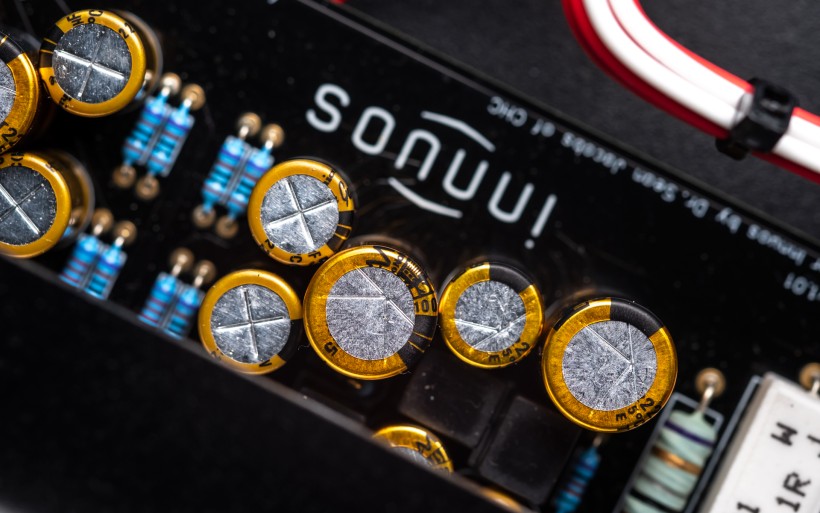 The fight between the previous Innuos flagship and its kosher Next-Gen version was a dead cert long before the newcomer’s arrival. I’ve been enjoying the standard Statement machine for several years, so this match was particularly appealing. Streamer comparisons can be finicky due to the issues with swapping apps, resetting routers and whatnot, which is why I expected some difficulties. Not today. Nuno Vittorino’s Sense app for iOS is stable as a rock and the best streamer software I’ve used. The Statement machine at my disposal since early 2021 is very reliable and predictable. It hasn’t crashed yet, not even once. It just always works. More importantly, its Next-Gen version runs on the same software. That proved extremely useful. The manufacturer’s own Sense app instantly listed both Innuos products connected to my network switch. It also allowed for selecting my streaming device of choice without resets or downtime, which was quite unexpected and highly convenient.
The fight between the previous Innuos flagship and its kosher Next-Gen version was a dead cert long before the newcomer’s arrival. I’ve been enjoying the standard Statement machine for several years, so this match was particularly appealing. Streamer comparisons can be finicky due to the issues with swapping apps, resetting routers and whatnot, which is why I expected some difficulties. Not today. Nuno Vittorino’s Sense app for iOS is stable as a rock and the best streamer software I’ve used. The Statement machine at my disposal since early 2021 is very reliable and predictable. It hasn’t crashed yet, not even once. It just always works. More importantly, its Next-Gen version runs on the same software. That proved extremely useful. The manufacturer’s own Sense app instantly listed both Innuos products connected to my network switch. It also allowed for selecting my streaming device of choice without resets or downtime, which was quite unexpected and highly convenient.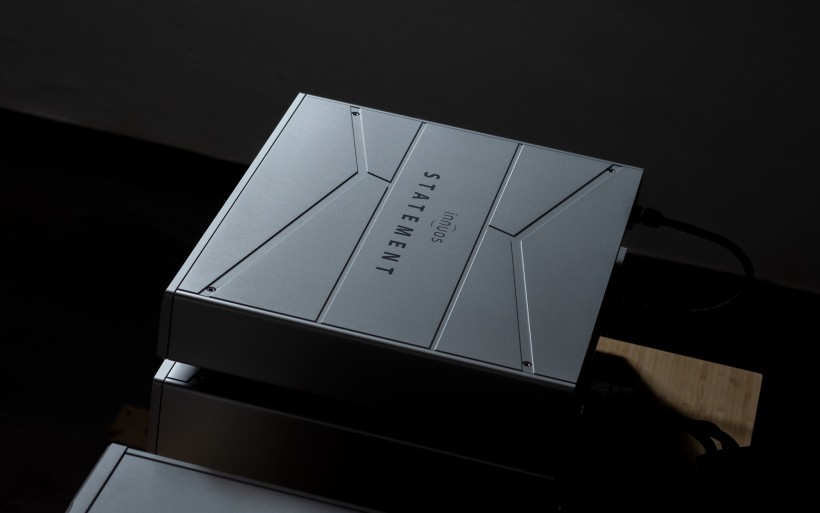 I had to manually move a USB cable from one Statement to the other, but even that wasn’t a problem as each time both instantly made a firm handshake with my DAC. Since swaps between Innuos transports were possible without powering them off, funny clicks or any other inconveniences, I didn’t have to adjust volume on the 915R preamp or mute it. Initially I thought that a thumb drive with a selection of tracks taken from the regular Statement to its Next-Gen version was the best way to move forward. There was a simpler way. I was advised to instead use the former as a NAS and import its entire library to the newcomer via LAN, which worked brilliantly. Transferring some 900GB of data took about 20 minutes and mere five button presses within the Sense app. My reference playlist was the only thing that was lost during the procedure. Extra 10 minutes to rebuild it on the Next-Gen was hardly a chore. After the fact I’d learnt that playlists also can be transferred from one Innuos device to another. Och well, live and learn. All things considered, I had no valid reasons to complain. Today’s comparison went far smoother than initially expected.
I had to manually move a USB cable from one Statement to the other, but even that wasn’t a problem as each time both instantly made a firm handshake with my DAC. Since swaps between Innuos transports were possible without powering them off, funny clicks or any other inconveniences, I didn’t have to adjust volume on the 915R preamp or mute it. Initially I thought that a thumb drive with a selection of tracks taken from the regular Statement to its Next-Gen version was the best way to move forward. There was a simpler way. I was advised to instead use the former as a NAS and import its entire library to the newcomer via LAN, which worked brilliantly. Transferring some 900GB of data took about 20 minutes and mere five button presses within the Sense app. My reference playlist was the only thing that was lost during the procedure. Extra 10 minutes to rebuild it on the Next-Gen was hardly a chore. After the fact I’d learnt that playlists also can be transferred from one Innuos device to another. Och well, live and learn. All things considered, I had no valid reasons to complain. Today’s comparison went far smoother than initially expected.
 Prior to diving into this report’s battle, let’s first recap how the regular Statement and ZENith Mk3 fared upon their arrival respectively three and four years ago. To make these reviews the fidata HFAS-S10U1 was my reference streaming platform. It quickly outclassed my Asus laptop and like so helped me to connect several important dots. Then I understood that hardware downstream relies on music inside digital transports and that makes them meaningful. If they output signal that’s matte, chiseled, grainy and lifeless, it won’t get fixed but processed and amplified. In other words, streamers determine the baseline upon which other components rely. Here the fidata’s analog-like profile exceed my expectations. In comparison to my laptop it packed more colors, textures, calmness, vividness and charm. This high expressiveness and big tone prettified music rather than dissecting it, while lesser emphasis on resolution and agility supported this action. It’s fair to say that with fidata my system’s sound was clearly colored, but I liked it a lot.
Prior to diving into this report’s battle, let’s first recap how the regular Statement and ZENith Mk3 fared upon their arrival respectively three and four years ago. To make these reviews the fidata HFAS-S10U1 was my reference streaming platform. It quickly outclassed my Asus laptop and like so helped me to connect several important dots. Then I understood that hardware downstream relies on music inside digital transports and that makes them meaningful. If they output signal that’s matte, chiseled, grainy and lifeless, it won’t get fixed but processed and amplified. In other words, streamers determine the baseline upon which other components rely. Here the fidata’s analog-like profile exceed my expectations. In comparison to my laptop it packed more colors, textures, calmness, vividness and charm. This high expressiveness and big tone prettified music rather than dissecting it, while lesser emphasis on resolution and agility supported this action. It’s fair to say that with fidata my system’s sound was clearly colored, but I liked it a lot.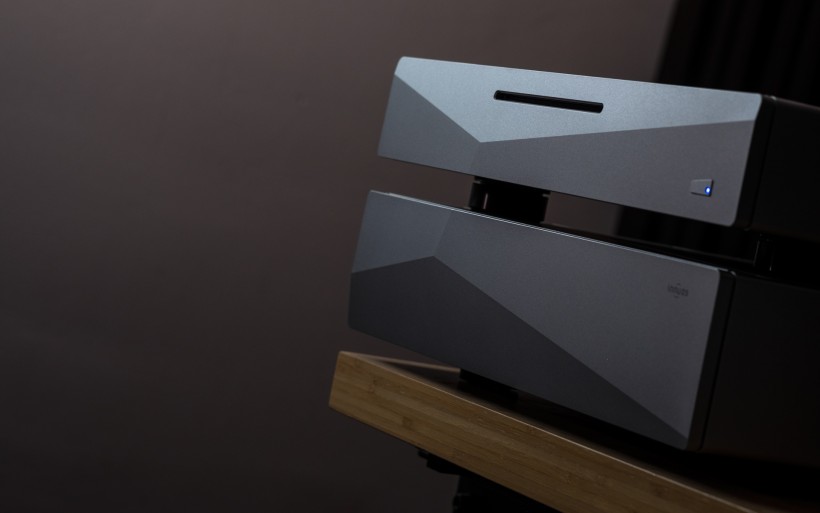 The ZENith Mk3 packed more punch and sounded more energetic and speedier than the fidata; feistier, more direct, contoured, shinier, snappier and with virtual sound sources served closer and outlined more firmly for the extra contrast pop and clarity. Even though my reference was twice as costly and the two contestants’ profiles were opposite pretty much, on sonic excellence alone I’d found them equals and subjectively appealing for different reasons. After their fight I really couldn’t decide which one I fancied more, so I remained faithful to the fidata. The Statement flagship streamer/server sent my way a year later didn’t leave me in such a pickle. Its voicing shared with the ZENith Mk3 wasn’t a surprise, but the way how it performed against my Japanese reference very much was.
The ZENith Mk3 packed more punch and sounded more energetic and speedier than the fidata; feistier, more direct, contoured, shinier, snappier and with virtual sound sources served closer and outlined more firmly for the extra contrast pop and clarity. Even though my reference was twice as costly and the two contestants’ profiles were opposite pretty much, on sonic excellence alone I’d found them equals and subjectively appealing for different reasons. After their fight I really couldn’t decide which one I fancied more, so I remained faithful to the fidata. The Statement flagship streamer/server sent my way a year later didn’t leave me in such a pickle. Its voicing shared with the ZENith Mk3 wasn’t a surprise, but the way how it performed against my Japanese reference very much was.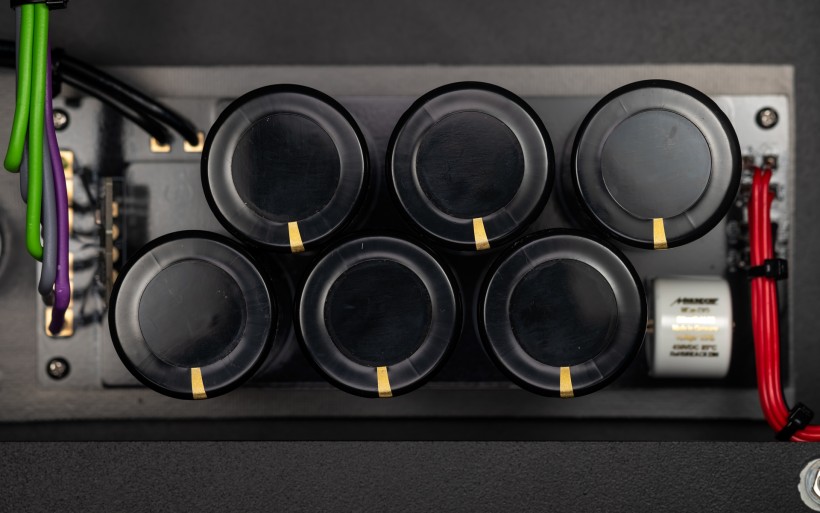 The Statement surpassed the HFAS1-S10U on agility, openness, expansiveness, propulsion and didn’t sound mechanical because of that. The latter in comparison felt lazier, veiled, thicker, rounder and wooly on bass. It didn’t take long to get the memo that this fight was clearly between sparring partners from different leagues and one noticeably higher. The Innuos emerged as more balanced versus the rounder and mellower thus more situational fidata. The key takeaway was elsewhere. For the first time I’d heard how biased the Japanese was and how much of an impact that had on my system. At first I thought that my amps were the culprits, but in reality the fidata was. The Statement merely revealed that. Upon using it my Boenicke W11 SE+ floorstanders sounded significantly more agile, engaging, livelier and less problematic on bass in my room.
The Statement surpassed the HFAS1-S10U on agility, openness, expansiveness, propulsion and didn’t sound mechanical because of that. The latter in comparison felt lazier, veiled, thicker, rounder and wooly on bass. It didn’t take long to get the memo that this fight was clearly between sparring partners from different leagues and one noticeably higher. The Innuos emerged as more balanced versus the rounder and mellower thus more situational fidata. The key takeaway was elsewhere. For the first time I’d heard how biased the Japanese was and how much of an impact that had on my system. At first I thought that my amps were the culprits, but in reality the fidata was. The Statement merely revealed that. Upon using it my Boenicke W11 SE+ floorstanders sounded significantly more agile, engaging, livelier and less problematic on bass in my room. The two-box Innuos reference had more surprises in store. The fidata produced highs more sublime, smoother and weightier than the airy radiant ZENith Mk3, so naturally I thought that perhaps on this count the Statement had to stutter at least a bit. This wasn’t the case. In spite of its tonal center of gravity a fair bit higher, the Portuguese flagship had left the itchier less refined HFAS1-S10U in the rearview mirror by producing treble more exposed, finessed, smoother and presented on inkier backdrop. From this I gathered that the best Innuos platform had to pack more potent noise-trimming means, which was a fair assumption considering its hefty sticker. Not only this, the fidata thrived on calm instrumental and vocal music, while the Statement was ace all across the board. It kept excessive sharpness at bay yet knew how to preserve each song’s original character and up the ante on clarity, smoothness, pace, spiciness and overall variety. My system with this streamer/server on the job sounded more believable and balanced; on quick angry fare noticeably speedier and slamming than with the fidata, while gentle relaxing bits were a touch more leisurely, as if the Statement’ higher-tiered arsenal allowed it to portray artists’ intentions more accurately.
The two-box Innuos reference had more surprises in store. The fidata produced highs more sublime, smoother and weightier than the airy radiant ZENith Mk3, so naturally I thought that perhaps on this count the Statement had to stutter at least a bit. This wasn’t the case. In spite of its tonal center of gravity a fair bit higher, the Portuguese flagship had left the itchier less refined HFAS1-S10U in the rearview mirror by producing treble more exposed, finessed, smoother and presented on inkier backdrop. From this I gathered that the best Innuos platform had to pack more potent noise-trimming means, which was a fair assumption considering its hefty sticker. Not only this, the fidata thrived on calm instrumental and vocal music, while the Statement was ace all across the board. It kept excessive sharpness at bay yet knew how to preserve each song’s original character and up the ante on clarity, smoothness, pace, spiciness and overall variety. My system with this streamer/server on the job sounded more believable and balanced; on quick angry fare noticeably speedier and slamming than with the fidata, while gentle relaxing bits were a touch more leisurely, as if the Statement’ higher-tiered arsenal allowed it to portray artists’ intentions more accurately.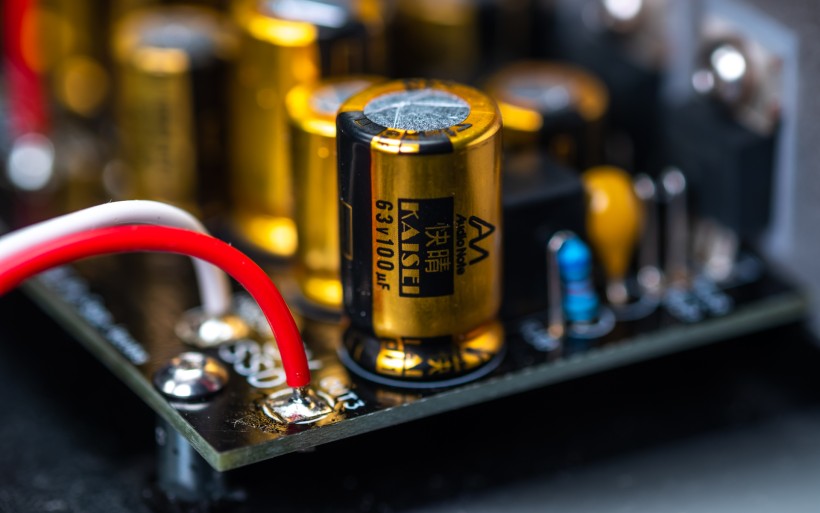 The Statement was clearly superior on spatial scale, authority, grain-free background, closeness and articulation, which is why the fidata seemed a fair bit shaky, grainy, distant, hooded and stuffy. The more I compared the two products, the more and more the former impressed with its upper hand on clarity, overall meticulousness, shove, impact, immediacy and imaging size in all dimensions. As much as I enjoy gentle female voices assisted by say one or two real instruments, I’m a sucker for heavy music dosed at high SPL. Here the dynamically gifted Portuguese simply did more. This wild MO atop its ability to instantly brake on delicate repertoire revealed its top versatility. The inherently quick ZENith Mk3 didn’t have its adaptive skills developed this well, while the mellow fidata ran out of steam when raw horsepower was a must. The Innuos flagship emerged victorious because it finely blended and reinforced the best features of both these products, and then artfully adapted to each music genre. Its sound struck me as utmost correct; finely balanced, insightful, mighty, packed with color, vivid and all around awesome. From this point onwards the HFAS1-S10U seemed even more situational than before. Overly ethereal texturally shy skinny setups in dire need of extra mass, warmth and roundness would enjoy its company a lot. The sonically versatile Statement however will do equally well in every system I can think of, which I consider as one of its greatest assets.
The Statement was clearly superior on spatial scale, authority, grain-free background, closeness and articulation, which is why the fidata seemed a fair bit shaky, grainy, distant, hooded and stuffy. The more I compared the two products, the more and more the former impressed with its upper hand on clarity, overall meticulousness, shove, impact, immediacy and imaging size in all dimensions. As much as I enjoy gentle female voices assisted by say one or two real instruments, I’m a sucker for heavy music dosed at high SPL. Here the dynamically gifted Portuguese simply did more. This wild MO atop its ability to instantly brake on delicate repertoire revealed its top versatility. The inherently quick ZENith Mk3 didn’t have its adaptive skills developed this well, while the mellow fidata ran out of steam when raw horsepower was a must. The Innuos flagship emerged victorious because it finely blended and reinforced the best features of both these products, and then artfully adapted to each music genre. Its sound struck me as utmost correct; finely balanced, insightful, mighty, packed with color, vivid and all around awesome. From this point onwards the HFAS1-S10U seemed even more situational than before. Overly ethereal texturally shy skinny setups in dire need of extra mass, warmth and roundness would enjoy its company a lot. The sonically versatile Statement however will do equally well in every system I can think of, which I consider as one of its greatest assets.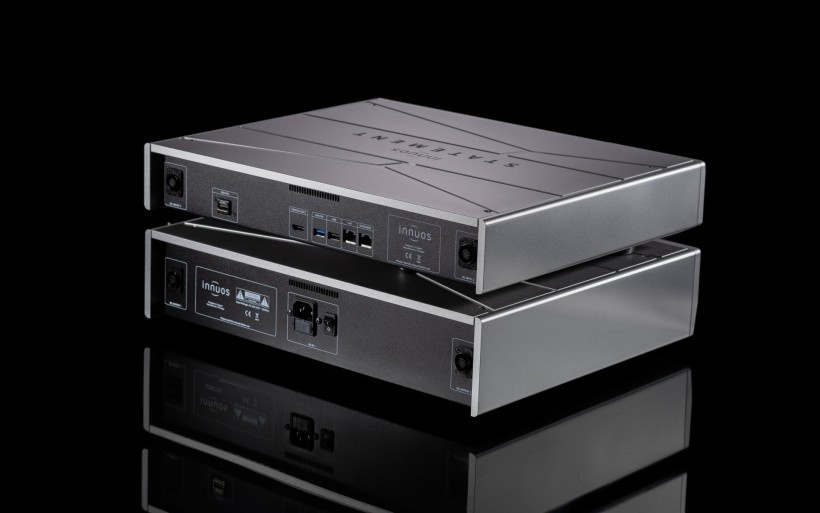 Three years is a long time to get accustomed to any audio product, especially if it’s used say four to five days per week. The Statement proved its competence on sound and UI so many times that I haven’t yet entertained the thought of replacing it with something else. I’d have to first find a product that operates at least as smoothly and sounds noticeably better to consider this. Since the Statement Next-Gen is essentially the same platform, it behaves exactly like its predecessor. You really couldn’t tell them apart on this front. The newcomer however sounds noticeably better on many levels and goes significantly beyond subtle touchups here and there. From my point of view this performance leap was quite significant.
Three years is a long time to get accustomed to any audio product, especially if it’s used say four to five days per week. The Statement proved its competence on sound and UI so many times that I haven’t yet entertained the thought of replacing it with something else. I’d have to first find a product that operates at least as smoothly and sounds noticeably better to consider this. Since the Statement Next-Gen is essentially the same platform, it behaves exactly like its predecessor. You really couldn’t tell them apart on this front. The newcomer however sounds noticeably better on many levels and goes significantly beyond subtle touchups here and there. From my point of view this performance leap was quite significant.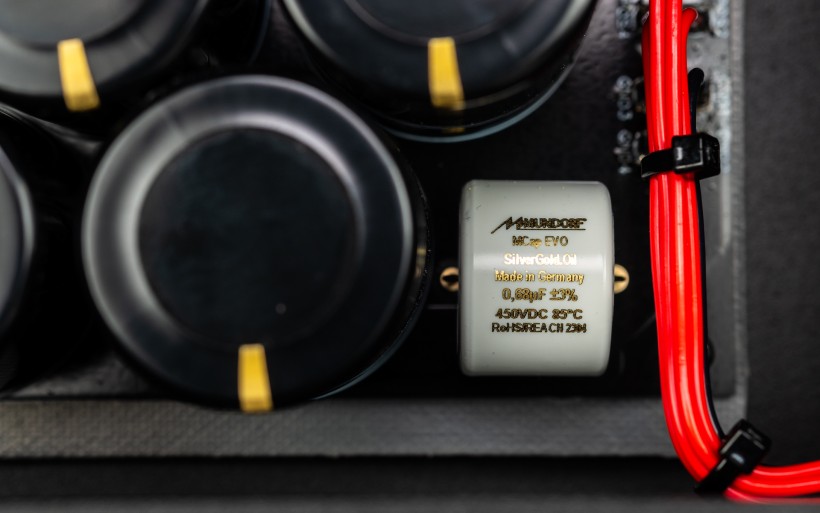 It didn’t take long to acknowledge where the Next-Gen scored higher. Just one change between this product and its older sibling sufficed to map the fundamental differences. Thus far I had no reasons to see the latter as a weakling on bass control, reach and crack. The new Statement didn’t change this either yet sounded noticeably more powerful and visceral, as if its engine grew larger to reap the obvious benefits. The Next-Gen’s higher elasticity, effortlessness, momentum and immediacy were particularly apparent on introductory seconds of tracks “Keep It Together” and “Creeper” respectively by bands How To Destroy Angels and Acid. Early bass on these songs can really be felt inside a chest if only speakers allow. With today’s product this sensation was stronger and hardly subtle, so very meaningful in my opinion. The upgraded Statement pulled this without penalizing any other aspects of bass. Actually, it was the other way around. With this streamer on the job my system’s downstairs seemed juicier, tighter and quicker.
It didn’t take long to acknowledge where the Next-Gen scored higher. Just one change between this product and its older sibling sufficed to map the fundamental differences. Thus far I had no reasons to see the latter as a weakling on bass control, reach and crack. The new Statement didn’t change this either yet sounded noticeably more powerful and visceral, as if its engine grew larger to reap the obvious benefits. The Next-Gen’s higher elasticity, effortlessness, momentum and immediacy were particularly apparent on introductory seconds of tracks “Keep It Together” and “Creeper” respectively by bands How To Destroy Angels and Acid. Early bass on these songs can really be felt inside a chest if only speakers allow. With today’s product this sensation was stronger and hardly subtle, so very meaningful in my opinion. The upgraded Statement pulled this without penalizing any other aspects of bass. Actually, it was the other way around. With this streamer on the job my system’s downstairs seemed juicier, tighter and quicker. The Next-Gen’s higher potency on rapid wild bass blows also manifested on my playlist’s funky bits. Altın Gün’s song “Doktor Civanım” is the perfect example where the disparity between the two platforms was large to say the least. This song isn’t infused with infra bass, so both devices reached as deep. The new Statement however presented it in the sensibly more immediate fashion. Here I refer to its ability to start and stop each individual pulse quicker and like so expand dynamics and make music more alive. The non-audiophile lingo has a far simpler explanation. On this specific track my foot tapped far more with the newcomer Innuos than with its older version. Ditto Altın Gün’s cover of “Kırşehir’in Gülleri”. The album version is rather innocent. The band’s live take on it is more explosive and adequately raw. On such intense energetic fare the Next-Gen was armed with larger claws so to speak. It packed more bite, torque and enjoyable directness atop all else it did, which effectively produced grander beefier snappier sound that maintained the noticeably higher overall excitement level. On Mike Oldfield’s “Taurus III” at high volume it went through the roof.
The Next-Gen’s higher potency on rapid wild bass blows also manifested on my playlist’s funky bits. Altın Gün’s song “Doktor Civanım” is the perfect example where the disparity between the two platforms was large to say the least. This song isn’t infused with infra bass, so both devices reached as deep. The new Statement however presented it in the sensibly more immediate fashion. Here I refer to its ability to start and stop each individual pulse quicker and like so expand dynamics and make music more alive. The non-audiophile lingo has a far simpler explanation. On this specific track my foot tapped far more with the newcomer Innuos than with its older version. Ditto Altın Gün’s cover of “Kırşehir’in Gülleri”. The album version is rather innocent. The band’s live take on it is more explosive and adequately raw. On such intense energetic fare the Next-Gen was armed with larger claws so to speak. It packed more bite, torque and enjoyable directness atop all else it did, which effectively produced grander beefier snappier sound that maintained the noticeably higher overall excitement level. On Mike Oldfield’s “Taurus III” at high volume it went through the roof.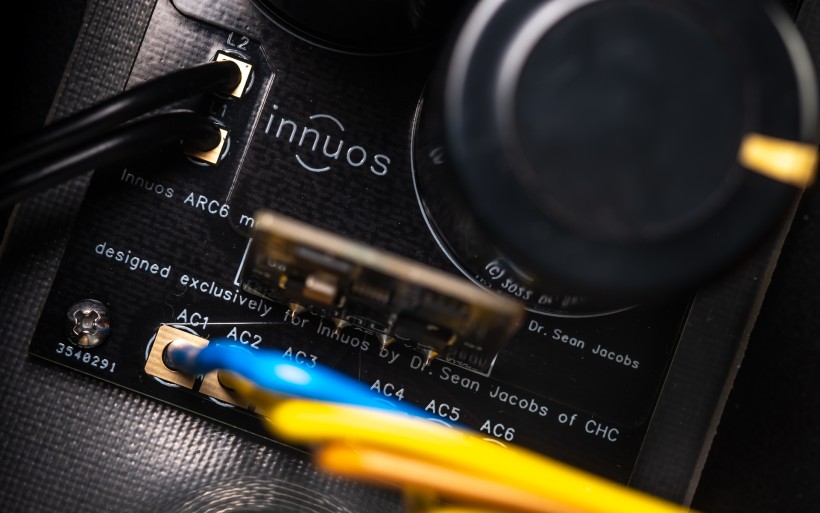 The above sufficed to map the Next-Gen as a the regular Statement’s more advanced version, so here I could easily wrap this story and move onto the next one. After all, squeezing the extra might, speed and shove from the product already very accomplished on these counts is no trivial task in my book. At a performance level this high landing a meaningful progress especially in form of an upgrade isn’t easy, which is enough to brand the evolved Statement as the winner. It still had one more ace up its sleeve and related to different traits. On spatial sizing it felt larger than its regular sibling, which wasn’t surprising given the partial contribution from more authoritative more tectonic harder bass jabs. The Next-Gen presented virtual sound sources in a particularly tasteful way which combined more distinctive outlines with juicier internal textures to net the sensible vividness boost. Upon returning to the regular Statement i.e. female voices felt a tad withdrawn thus less present, not quite as alive and on some recordings also icier.
The above sufficed to map the Next-Gen as a the regular Statement’s more advanced version, so here I could easily wrap this story and move onto the next one. After all, squeezing the extra might, speed and shove from the product already very accomplished on these counts is no trivial task in my book. At a performance level this high landing a meaningful progress especially in form of an upgrade isn’t easy, which is enough to brand the evolved Statement as the winner. It still had one more ace up its sleeve and related to different traits. On spatial sizing it felt larger than its regular sibling, which wasn’t surprising given the partial contribution from more authoritative more tectonic harder bass jabs. The Next-Gen presented virtual sound sources in a particularly tasteful way which combined more distinctive outlines with juicier internal textures to net the sensible vividness boost. Upon returning to the regular Statement i.e. female voices felt a tad withdrawn thus less present, not quite as alive and on some recordings also icier.
Although the difference in bass quality and vigor between the two contestants was large, it wasn’t a deal-breaker. The original Statement held its ground very well in these regards, so upon using it again after a day or two spent exclusively with the Next-Gen, well, my system didn’t collapse. The disparity on the spatial and textural fronts however didn’t let go. Here the latter reigned supreme and surpassed its predecessor just about enough to impress far more. Upon landing a sonic hike this noticeable, many manufacturers would dress it up as a brand new product. Team Innuos didn’t, so kudos to them for extending the life of their already awesome Statement and making it this much better. The asking price for the Next-Gen upgrade is fair given the magnitude of wholly positive sonic benefits I’d heard. Meanwhile, those who wish to pursue the very best streamer/server I’d sampled, Innuos Statement Next-Gen is it. All in all, bravo!
Associated Equipment:
- Amplifier: Trilogy 995R, FirstWatt F7, Enleum AMP-23R
- DAC: LampizatOr Pacific (KR Audio T-100 / Living Voice 300B + KR Audio 5U4G Ltd. Ed.)
- Speakers: Boenicke Audio W11 SE+, sound|kaos Vox 3afw
- Transport: Innuos Statement, fidata HFAS1-S10U
- Preamplifier: Trilogy 915R, Thöress DFP
- Speaker cables: Boenicke Audio S3, LessLoss C-MARC
- Headphones: HifiMan Susvara
- Speaker signal conditioning: LessLoss Firewall for Loudspeakers, Boenicke ComDev
- Anti-vibration conditioning: 12x Carbide Audio Carbide Bases (under DAC, preamp and speakers)
- Interconnects: LessLoss Entropic Process C-MARC, Boenicke Audio IC3 CG
- Power components: Gigawatt PC-3 SE EVO+/LC-3 EVO, LessLoss C-MARC, LessLoss Entropic Process C-MARC, Boenicke Audio Power Gate, ISOL-8 Prometheus
- USB components: iFi audio Mercury3.0
- Rack: Franc Audio Accesories Wood Block Rack 1+3
- Network: Fidelizer EtherStream, Linksys WRT160N
- Music: NativeDSD
Retail prices of reviewed components in EU (incl. VAT):
- Innuos Statement Next-Gen (1/2/4/8TB): €20’000/20’300/20’900/22’100
- The Next-Gen upgrade for the regular Statement: €5’000
Manufacturer: Innuos


